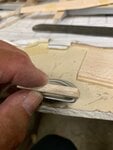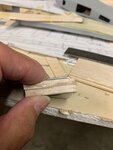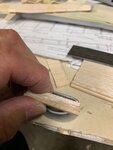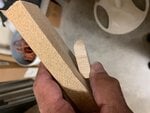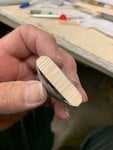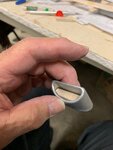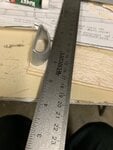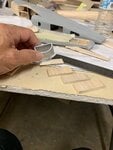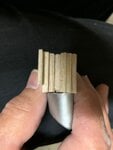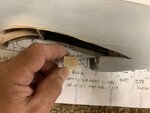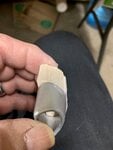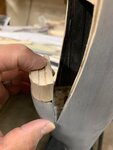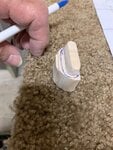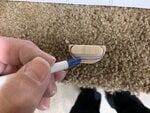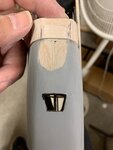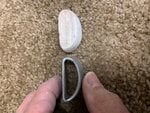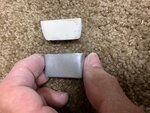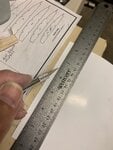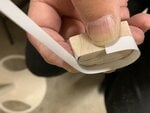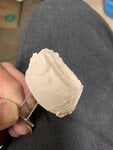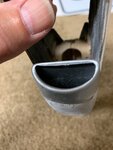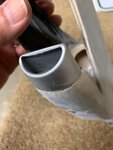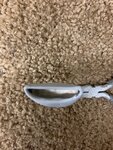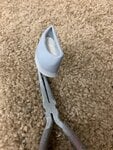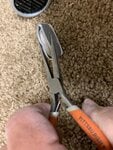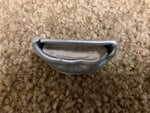- Thread starter
- #221
Skyediamonds
Staff Sergeant
- 1,362
- May 26, 2018
I then made up a series of laminations of balsa sheets to help me determine the ideal "thickness" or opening of the inlet. Initially it was too thin, then it was too thick and finally, like a child's story of the Goldilocks and the Three Bears, I found a thickness of lamination to be "about right" for the inlet.
From there, I sanded and rounded the laminated balsa into a reasonable shape of the inlet that also would match the size of the inlet to be used on the model. The last picture is obviously staged for the camera.
From there, I sanded and rounded the laminated balsa into a reasonable shape of the inlet that also would match the size of the inlet to be used on the model. The last picture is obviously staged for the camera.

